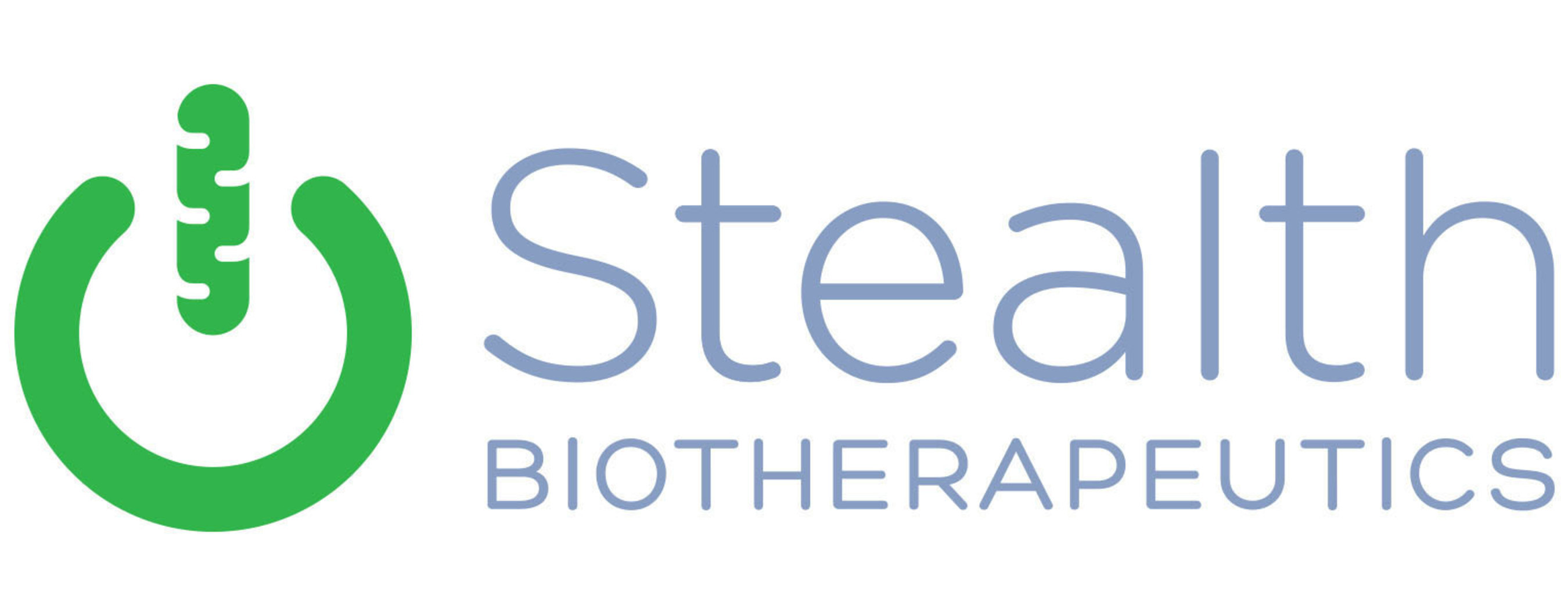NEEDHAM, Mass. , April 24, 2025 /PRNewswire/ -- Stealth BioTherapeutics Inc. (the "Company" or "Stealth"), a clinical-stage biotechnology company focused on the discovery, development and commercialization of novel therapies for diseases involving mitochondrial dysfunction, today announced several upcoming presentations at the Association for Research in Vision and Ophthalmology (ARVO) Annual Meeting, which is being held May 4-8, 2025 , in Salt Lake City .
These include new data on bevemipretide, the Company's next-generation ocular topical investigational medicine, including protective effects observed in models of dry age-related macular degeneration (AMD) and glaucoma, and preclinical toxicology and exposure data informing the Company's planned Phase 1 study. "We are pleased to present compelling new data further supporting the development of bevemipretide eye drops in serious ophthalmic disorders, beginning with dry AMD," said Reenie McCarthy , CEO of Stealth BioTherapeutics. "Our goal is to intervene earlier in disease pathology, when bioenergetic mitochondrial deficits implicated in the progressive degeneration and loss of photoreceptors, eventually leading to vision loss, may still be reversible.

As the first mitochondria-targeted topical treatment under investigation for its potential to restore mitochondrial structure and function – and ultimately preserve visual function – bevemipretide may offer a more patient-friendly approach to earlier disease intervention." Stealth's ARVO presentations are as follows: Oral : "Ocular topical bevemipretide: targeting retinal tissue and preventing RPE cell and photoreceptor loss in a dry age-related macular degeneration (AMD) model" In a dry AMD preclinical model, bevemipretide prevented loss of retinal pigment epithelium (RPE) cells and photoreceptors within the retina and reduction of the outer nuclear layer and total retinal thickness, as compared to vehicle. Presentation Number: 927 Presenter: Michael DiMatteo , Ph.
D., Vice President, Medical Affairs, Ophthalmology, Stealth BioTherapeutics Presentation Time: Sunday, May 4 at 3:45pm - 4:00pm MT Location: Ballroom F Session: "AMD: New drugs, delivery systems, and mechanisms of action I" Poster : "Topical bevemipretide (SBT-272) eye drops in development for dry AMD: Phase 1 trial design informed by 13-week GLP study results" Preclinical study results show sustained dose-dependent concentrations in target retinal tissues following topical administration. Safety findings were deemed non-adverse and largely reversible following a four-week recovery period.
Posterboard Number: B0245 Presenter: Anthony Abbruscato , Pharm.D., Senior Vice President of Clinical Development, Stealth BioTherapeutics Presentation Time: Monday, May 5 at 3:00pm - 4:45pm MT Location: Poster Hall Session: "AMD pathology and preclinical studies" Poster : "Neuroprotective Effects of Topical Bevemipretide (SBT-272) in a Rodent Model of Glaucoma" In a glaucoma preclinical model, bevemipretide prevented degradation of mitochondrial structure and retinal ganglion cell (RGC) axon transport and protected visual function as assessed by optokinetic nystagmus (OKN) reflex.
Posterboard Number: A0445 Presenter: Nolan R. McGrady , Ph.D.
, Associate Basic Scientist, Vanderbilt University Medical Center Presentation Time: Tuesday, May 6 at 1:15pm - 3:00pm MT Location: Poster Hall Session: "Glaucoma: Neuroprotection and neurorepair" About Dry AMD AMD is the leading cause of blindness, estimated to affect approximately 20 million older Americans. 1 Most patients (85% to 90%) suffer from dry AMD, a progressive and irreversible retinal disease leading to loss of vision due to damage and death of photoreceptors. 2 Photoreceptors are retinal neurons that depend heavily on mitochondrial bioenergetics to convert light into electrical signals required for normal visual function.
Mitochondrial dysfunction, often associated with aging, smoking, obesity, and cardiovascular health, precedes clinical symptoms and increases with AMD disease progression. 3,4,5 Photoreceptor loss, an FDA-approvable endpoint for dry AMD, can be quantified by measuring the thickness between the ellipsoid zone (EZ), a mitochondrial rich layer of the photoreceptors, and retinal pigment epithelium (RPE). Loss of photoreceptors has been shown to precede and predict the loss of visual function in dry AMD.
About Stealth BioTherapeutics Our mission is to develop novel therapies to improve the lives of patients living with diseases of mitochondrial dysfunction. Our lead product candidate, elamipretide, is under review for Barth syndrome and in late-stage development for primary mitochondrial myopathy and dry age-related macular degeneration, where we observed a highly protective effect on photoreceptor loss in Phase 2. We are evaluating a topical ophthalmic formulation of our second-generation clinical-stage candidate, bevemipretide (SBT-272), for dry age-related macular degeneration.
We have a deep pipeline of novel compounds under evaluation for rare neurological, cardiac and myopathic diseases. Investor Contact Austin Murtagh Precision AQ [email protected] Media Contact Anna Stallmann Anna Stallmann Communications [email protected] 1 David B. Rein et al.
, "Prevalence of Age-Related Macular Degeneration in the US in 2019," JAMA Ophthalmology 140, no. 12 ( November 3, 2022 ): 1202, https://doi.org/10.
1001/jamaophthalmol.2022.4401 .
2 Neil M. Schultz et al., "Global Burden of Dry Age-Related Macular Degeneration: A Targeted Literature Review," Clinical Therapeutics 43, no.
10 ( October 2021 ): 1792–1818, https://www.clinicaltherapeutics.com/article/S0149-2918(21)00310-6/ .
3 Janos Feher et al., "Mitochondrial Alterations of Retinal Pigment Epithelium in Age-related Macular Degeneration," Neurobiology of Aging 27, no. 7 ( June 24, 2005 ): 983–93, https://doi.
org/10.1016/j.neurobiolaging.
2005.05.012 .
4 Pabalu P. Karunadharma et al., "Mitochondrial DNA Damage as a Potential Mechanism for Age-Related Macular Degeneration," Investigative Ophthalmology & Visual Science 51, no.
11 ( May 26, 2010 ): 5470, https://doi.org/10.1167/iovs.
10-5429 . 5 Marcia R. Terluk et al.
, "Investigating Mitochondria as a Target for Treating Age-Related Macular Degeneration," Journal of Neuroscience 35, no. 18 ( May 6, 2015 ): 7304–11, https://doi.org/10.
1523/jneurosci.0190-15.2015 .
SOURCE Stealth BioTherapeutics Inc..
Business

Stealth BioTherapeutics to Present New Bevemipretide Data at ARVO Annual Meeting

NEEDHAM, Mass., April 24, 2025 /PRNewswire/ -- Stealth BioTherapeutics Inc. (the "Company" or "Stealth"), a clinical-stage biotechnology company focused on the discovery, development and commercialization of novel therapies for diseases involving mitochondrial dysfunction, today announced...















